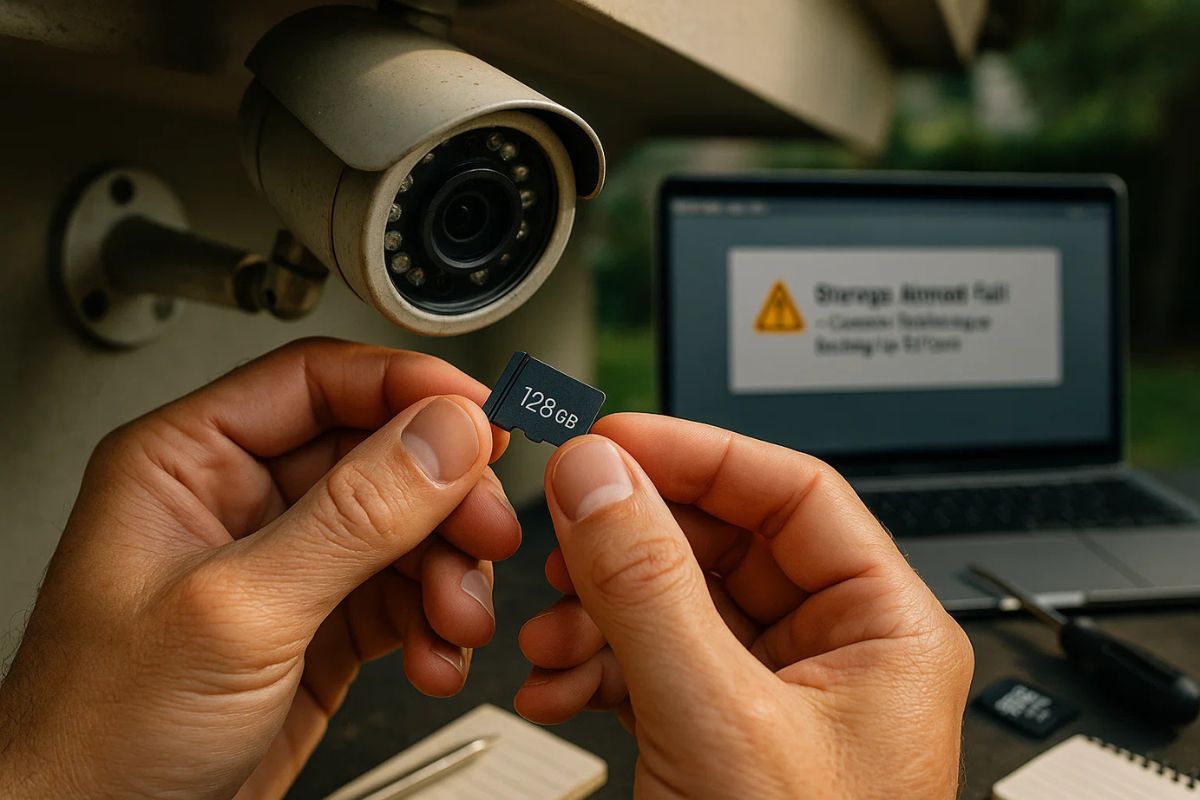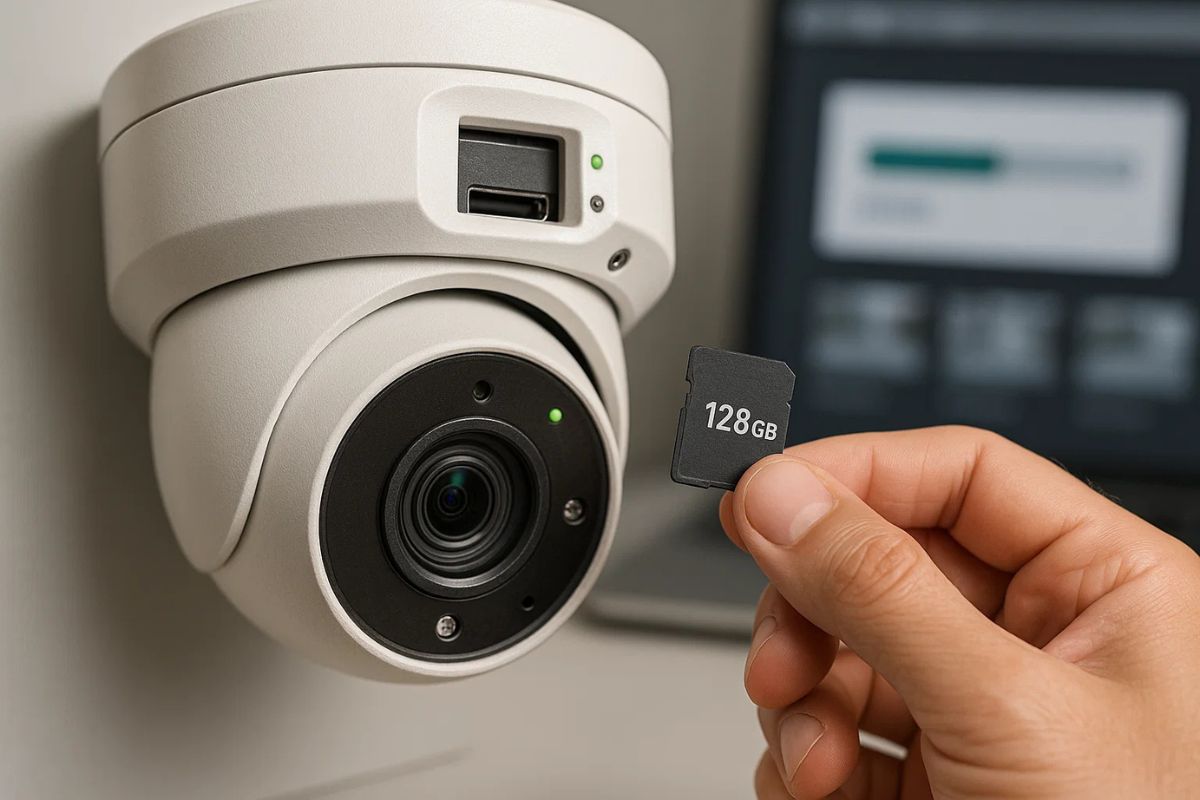What Kind of CCTV Camera Is Used for Indoor?
Security is no longer a luxury—it’s a necessity. Whether you’re protecting your home, office, or retail space, installing an indoor CCTV camera is one of the most effective ways to ensure safety, monitor activity, and maintain peace of mind. However, choosing the right type of indoor camera can be overwhelming with the variety of models available on the market, which is why it’s important to understand the process of CCTV and camera installation as you explore the different types of indoor CCTV cameras, their features, ideal placements, legal considerations, and everything else you need to make a confident, informed decision.
Types of Indoor CCTV Cameras
When selecting an indoor camera, understanding the common types is crucial. Each model serves a unique purpose based on placement, visibility, and coverage needs.
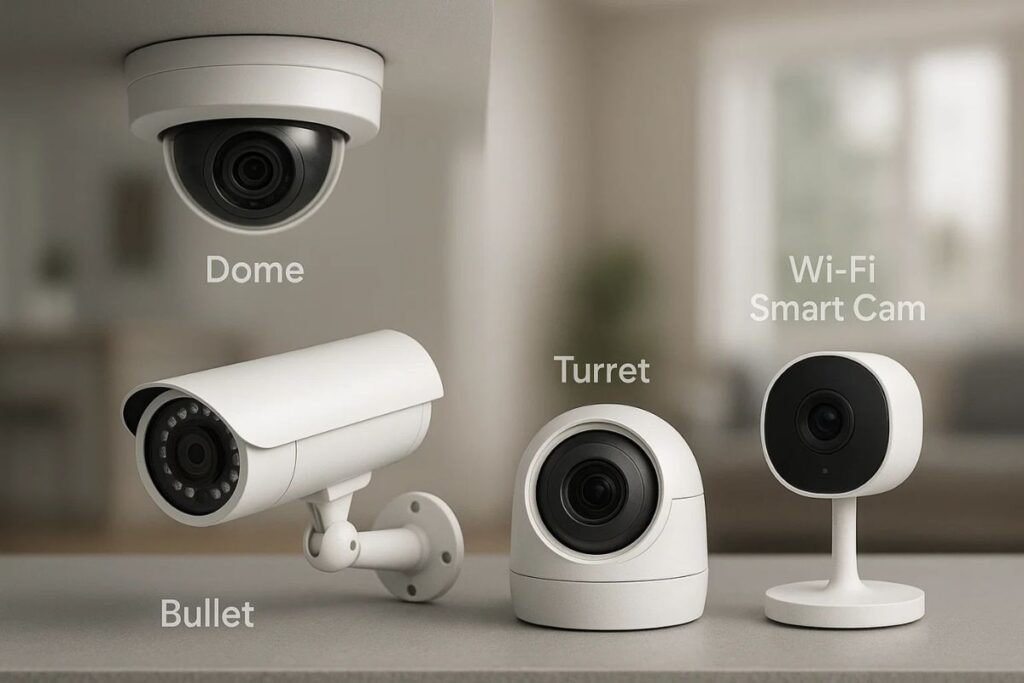
Dome Cameras
These are one of the most popular choices for indoor use. Their compact, dome-shaped design makes them discreet and less obtrusive. Ideal for ceilings, dome cameras offer a wide field of view and are often vandal-resistant, making them suitable for high-traffic indoor areas like living rooms or retail spaces.
Bullet Cameras
Bullet cameras are long and cylindrical, resembling a traditional camera body. While more visible than dome models, this visibility can act as a deterrent. Their design is perfect for long hallways or corridors where focused surveillance in one direction is needed.
PTZ (Pan-Tilt-Zoom) Cameras
For users needing flexible monitoring, PTZ cameras offer remote control over movement and zoom. These are excellent for larger indoor areas like open office layouts, warehouses, or living spaces where the camera needs to track subjects dynamically.
Hidden (Spy) Cameras
These covert cameras are designed to blend into the environment, often disguised as household objects or small gadgets. They are suitable for discreet monitoring but should always be used ethically and legally.
Cube Cameras
Compact and easy to install, cube cameras are perfect for homeowners and small business owners who need basic indoor monitoring. They’re usually plug-and-play, often equipped with smart features like motion detection and Wi-Fi connectivity.
Each type has its advantages, and selecting the right one largely depends on the specific indoor setting and the desired level of visibility and flexibility.
Key Features to Consider
A camera’s technical specifications significantly impact its performance and usability in an indoor environment. Understanding these features ensures you select equipment that not only meets your security expectations but also adapts to your unique indoor setting.
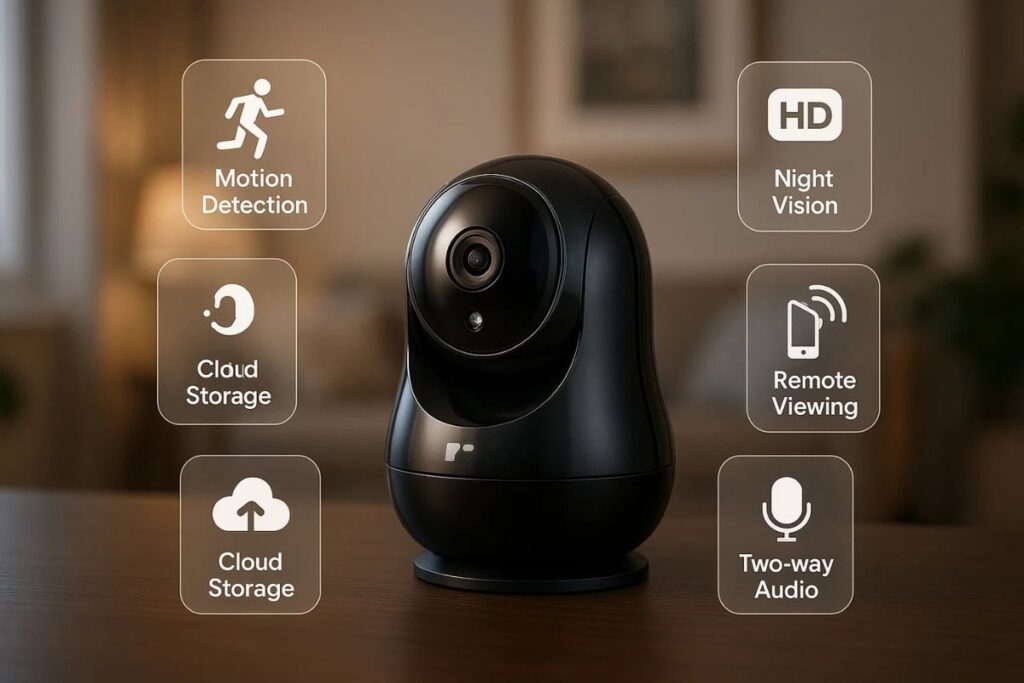
High-Definition Video Quality: From HD to 4K
Indoor CCTV cameras are commonly available in HD (720p), Full HD (1080p), and Ultra HD (4K) resolutions. While HD may work for monitoring smaller rooms or detecting general movement, Full HD and 4K provide crystal-clear footage that can capture finer details such as facial features or text. This is particularly valuable in scenarios requiring evidence collection or high-resolution playback.
Wide Field of View: Maximizing Coverage with Fewer Cameras
The camera’s field of view (FoV) determines how much area it can capture at once. A broader FoV ranging from 110° to 180°enables a single unit to monitor an entire room, significantly reducing the need for multiple cameras. This is especially helpful in open-concept homes or offices, where surveillance coverage needs to span across multiple access points or zones.
Night Vision and Motion Detection: Essential for 24/7 Monitoring
Most security breaches occur during low-light hours, making night vision a critical feature. Look for cameras equipped with infrared (IR) LEDs that can deliver clear black-and-white footage in complete darkness. In tandem, advanced motion detection ensures the camera records or sends alerts only when movement is detected, conserving storage and enhancing responsiveness.
Built-in Two-Way Audio: Communicate and Respond in Real Time
Two-way audio functionality transforms your CCTV camera from a passive recorder to an interactive tool. Built-in microphones and speakers allow users to listen and speak through the camera in real time. Whether it’s calming a pet, checking in on a child, greeting a delivery person, or deterring an intruder, two-way audio adds a new layer of functionality and engagement.
Wide Dynamic Range (WDR): Balanced Images in Mixed Lighting
Wide Dynamic Range is a feature designed to handle challenging lighting conditions like a room that’s partly in shadow and partly flooded with sunlight. Cameras with WDR technology adjust the exposure levels automatically, ensuring that both bright and dark areas of the image are visible. This results in balanced, clearer footage where no detail is lost due to underexposure or glare. You can also upgrade your security with a video intercom system to enhance your overall monitoring setup and ensure seamless communication with your security system.
Smart Connectivity
As homes and businesses become smarter, indoor cameras have evolved to offer seamless integration with smart systems.
Many modern CCTV systems can be linked with smart home ecosystems like Google Home, Alexa, or Apple HomeKit. This enables hands-free voice commands, automation, and a unified security network.
Another crucial factor is storage. Cloud-based options provide remote access and automatic backups, though they may require a subscription. In contrast, local storage—via SD cards or hard drives—offers more control and privacy but is vulnerable to physical damage or theft.
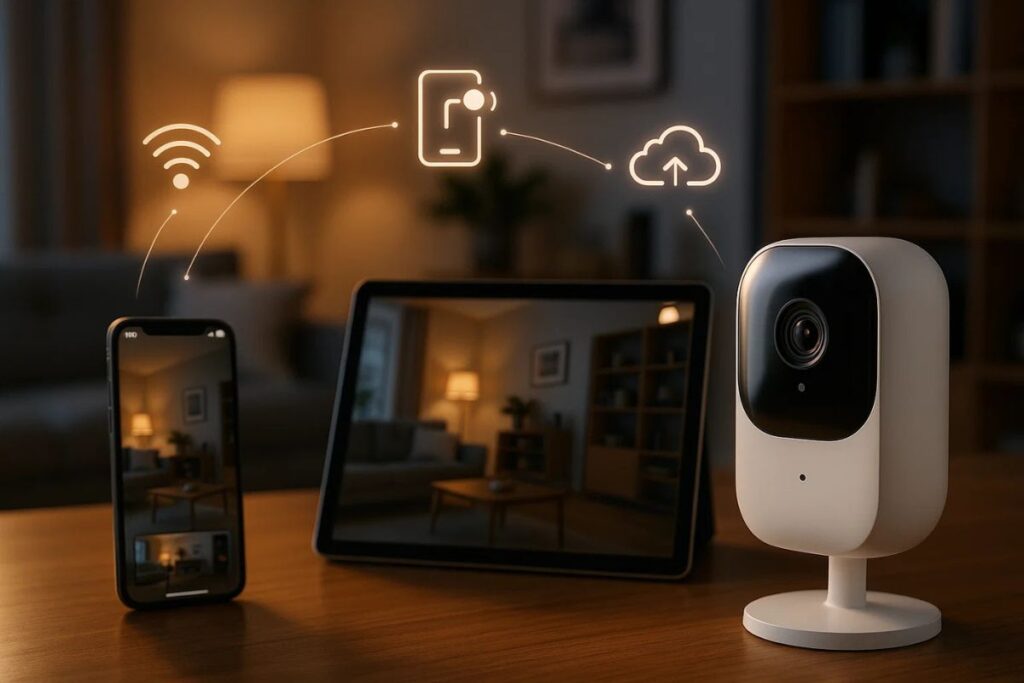
Most indoor cameras also come with mobile apps, allowing real-time alerts, remote control, and footage playback from anywhere in the world. This convenience is particularly valuable for homeowners, working parents, or frequent travelers.
For businesses looking for comprehensive CCTV solutions, our CCTV systems for business use offer high-end, scalable options.
Installation & Placement
While choosing the right type of camera is essential, proper installation and strategic placement play an equally important role in the effectiveness of any indoor CCTV system. A well-positioned camera not only enhances coverage but also reduces blind spots and improves overall image clarity.
Ideal Indoor Locations
The placement of cameras should be guided by both security priorities and activity patterns within the space. High-traffic zones and vulnerable entry points are prime locations. This includes front and back doors, hallways, living rooms, children’s rooms, and home offices. These areas often serve as both access points and common gathering spaces, making them vital for surveillance coverage.
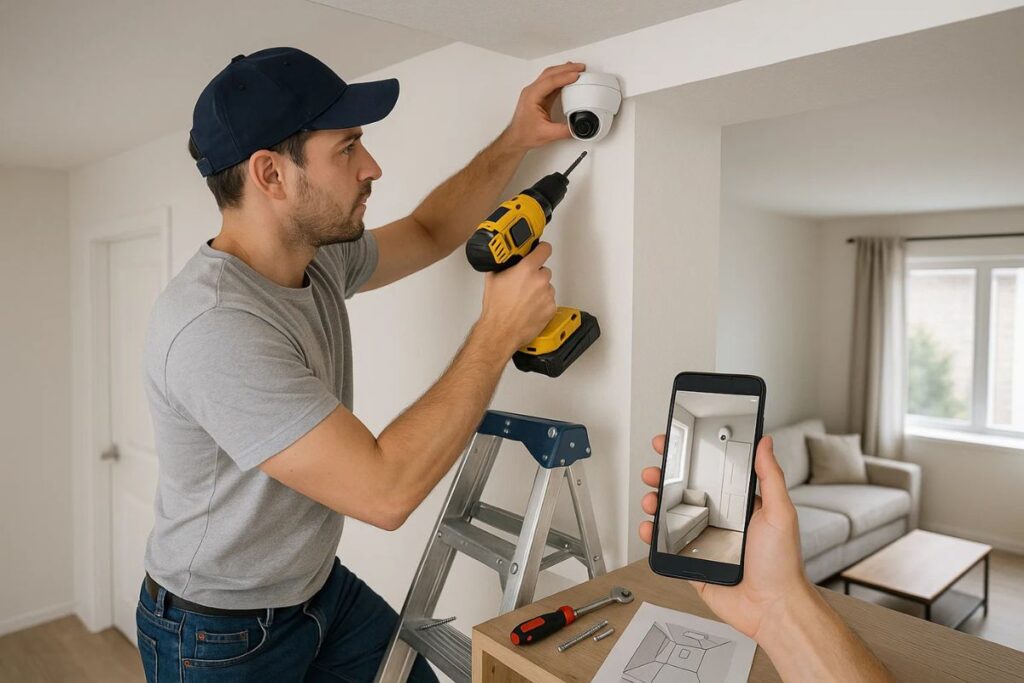
Mounting Options That Work
Depending on the room layout and camera type, different mounting approaches can be considered. Wall-mounted and ceiling-mounted installations are typically best for long-term coverage and for keeping cameras out of reach.They offer a commanding view of the room and reduce the risk of tampering. In contrast, shelf-mounted cameras provide more flexibility and are ideal for renters or smaller spaces where permanent mounting isn’t feasible.
Minimizing Blind Spots
Maximizing visibility requires thoughtful angling and positioning. Cameras should be mounted at a height that captures the entire room without sacrificing detail. Installing them in the corner of a room or directly above entryways ensures a broader field of view. It’s also crucial to keep cameras free from obstructions such as furniture, wall décor, or doors that could hinder visibility. A poorly placed camera can create significant blind spots and compromise the system’s effectiveness.
If you’re unsure where to begin or want to ensure everything is set up correctly, consider hiring professionals. Our CCTV installation services in Melbourne offer expert placement planning and reliable installation tailored to your space and needs.
Practical Use Cases
Indoor CCTV cameras cater to a wide variety of environments, offering tailored solutions for homeowners, office managers, and business owners alike. Here’s how they serve specific purposes in different settings.
Home Security
In residential spaces, indoor cameras are commonly used to keep an eye on children, elderly family members, or even nannies and domestic staff. They’re also a favorite among pet owners who want to check in on their animals during work hours. Many smart indoor cameras offer features like pet detection, two-way audio to calm pets remotely, and mobile app alerts for movement or sound.
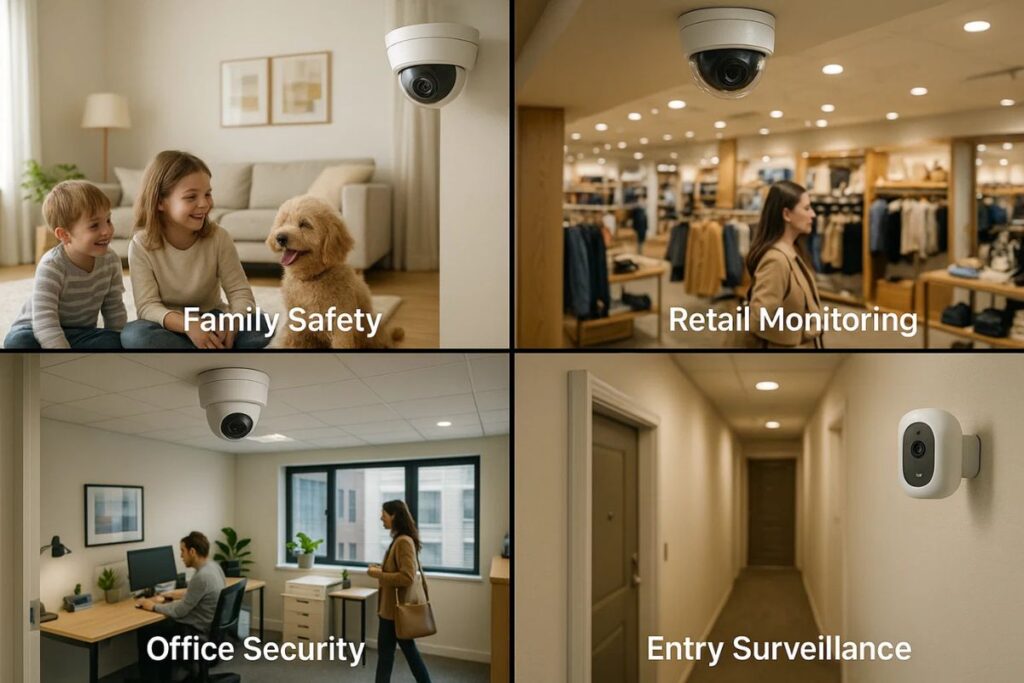
Office Surveillance
Small and mid-sized businesses often use indoor CCTV systems to monitor critical areas such as inventory storage, IT/server rooms, and employee-only zones. In open-plan offices, cameras can help deter theft, enforce safety protocols, and promote a culture of transparency. Integrating camera footage with access control systems can further boost internal security.
Retail Monitoring
Retail businesses benefit significantly from indoor surveillance. Cameras placed at entrances, exits, checkout counters, and near high-value product areas can deter shoplifters and catch suspicious activity in real-time. Beyond security, retailers also use camera footage to analyze customer behavior, optimize store layout, and improve service delivery based on traffic flow insights.
Cost and Budget
Indoor CCTV cameras come in a wide price range, catering to both budget-conscious users and those seeking premium features.
Basic models may cost between $50 and $100, offering essential functionality such as motion detection and cloud access. Mid-range models range from $150 to $250 and include features like HD video, two-way audio, and app integration. High-end models can exceed $300, especially those with PTZ functionality or AI-based analytics.
Investing in a higher-quality camera often leads to better performance, reliability, and longevity. Be mindful of hidden costs like subscription fees for cloud storage, software updates, or extended warranties. For the best results, it’s recommended to get reliable surveillance camera setup for your property to ensure maximum protection and professional installation quality.
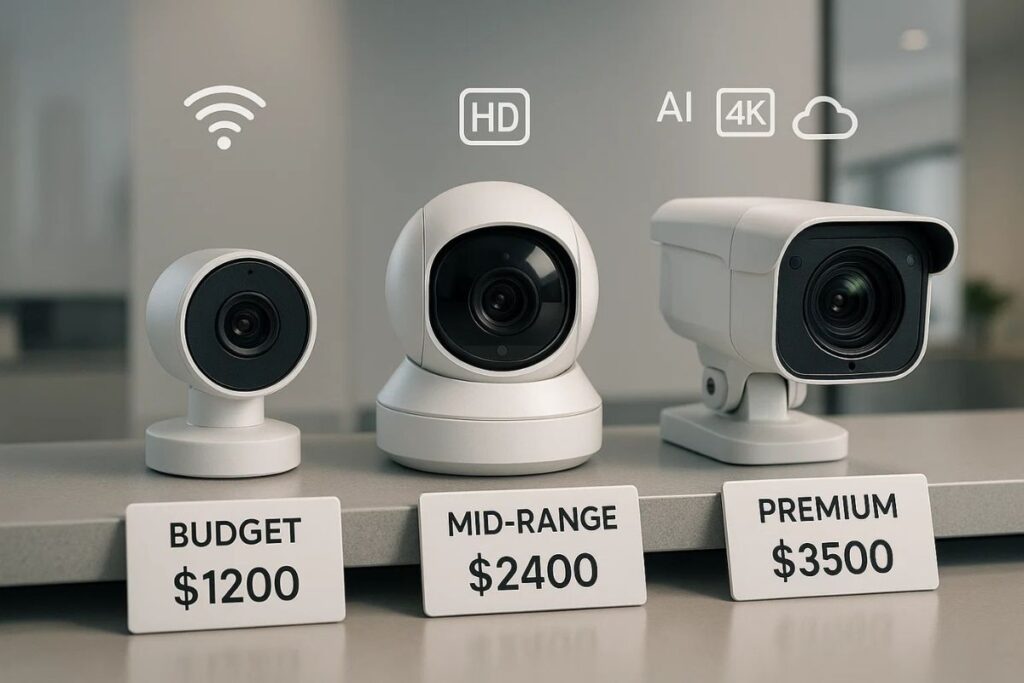
Data Privacy and Legal Considerations
When installing indoor surveillance, especially in shared or rented spaces, privacy laws must be respected.
Legal Restrictions
In Australia, it’s legal to use CCTV for personal protection, but you must not record in areas where people expect complete privacy, such as bathrooms or bedrooms. If you’re using surveillance in an office or business, employees must be informed.
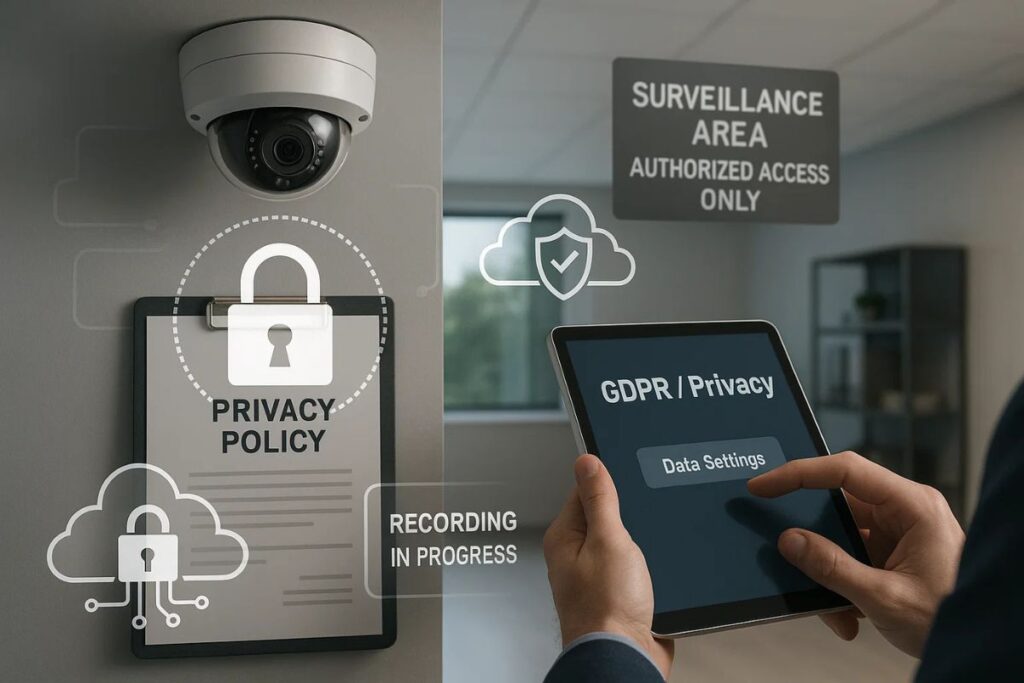
Secure Storage
Whether using cloud or local storage, ensure that access to recorded footage is encrypted and password-protected. This prevents unauthorized access and secures sensitive household or business data.
Understanding legal obligations is crucial. Always refer to regional laws or consult a professional to ensure compliance and avoid penalties.
Maintenance and Lifespan
To ensure your indoor CCTV system performs optimally over time, regular care and upkeep are essential. A neglected camera can result in blurred images, missed footage, and costly replacements.
Routine Cleaning and Visual Inspection
Indoor cameras may not be exposed to outdoor dust or weather, but they still gather dirt, fingerprints, or insects that can cloud the lens. Clean the lenses at least once a month using a microfiber cloth and lens-safe cleaner. While cleaning, inspect the housing, cables, and brackets for signs of wear, damage, or loose fittings. Also, check power connections and make sure the camera is transmitting and recording properly.
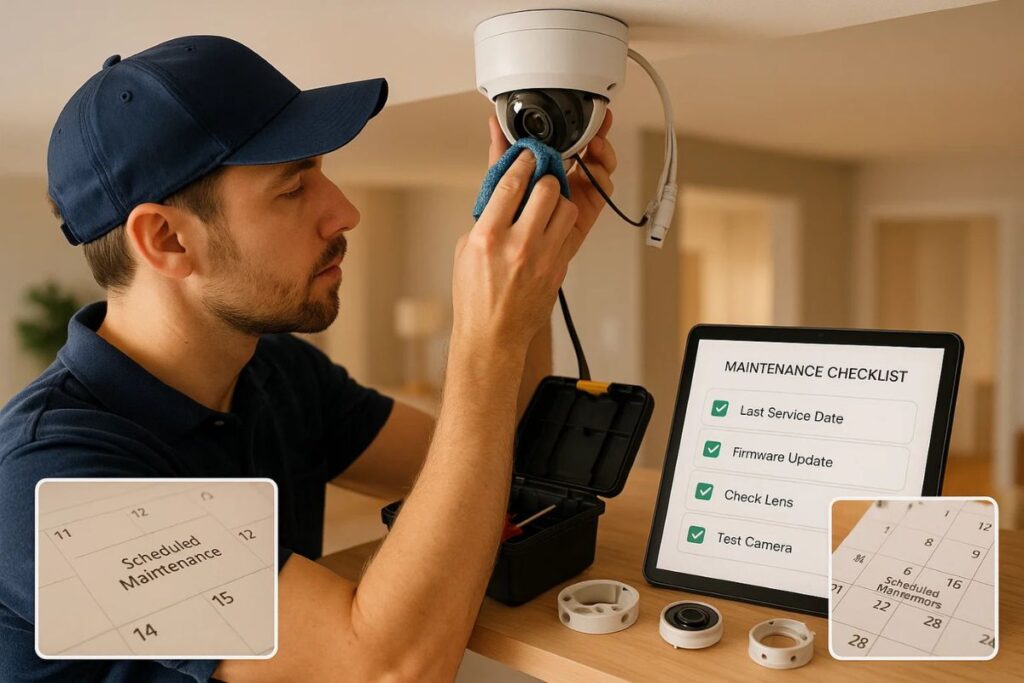
Keeping Software and Firmware Up to Date
CCTV manufacturers regularly release firmware and software updates to improve performance, patch vulnerabilities, and introduce new features. Always keep your system updated—either manually or by enabling automatic updates through the mobile app or web portal. Outdated firmware can result in security flaws or compatibility issues with cloud services or smart home integrations.
Average Life Expectancy of Indoor CCTV Cameras
High-quality indoor CCTV cameras from reputable brands typically last between 5 to 7 years, though lifespan can vary based on daily usage, environmental conditions like humidity or heat, and the level of maintenance they receive. Cheaper or generic models may wear out faster due to lower build quality or limited software support. Proper maintenance not only extends the life of your investment but also ensures your indoor surveillance system stays reliable when you need it most, and if you’re looking to upgrade your setup, you can buy Dahua IP Intercom Kit 900 for long-lasting performance and enhanced security.
Indoor vs. Outdoor Cameras
It’s essential to use the right type of camera in the right environment. Indoor cameras are built differently than outdoor units.
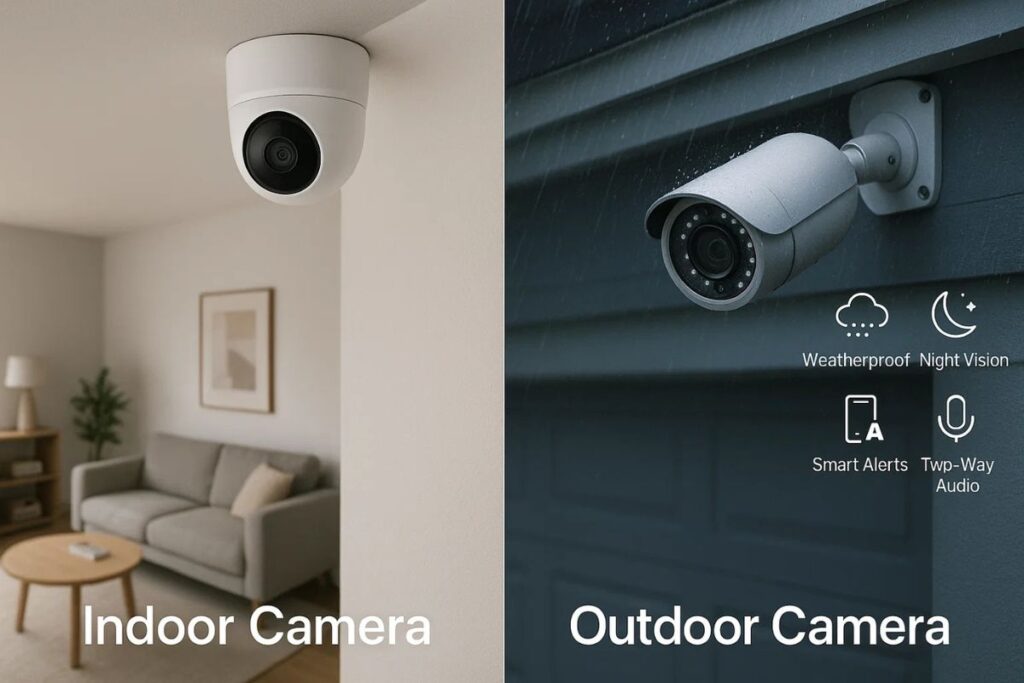
Structural Differences
Outdoor cameras are bulkier, waterproof, and built to withstand extreme temperatures. Using them indoors can be unnecessary and visually intrusive.
Performance Considerations
Indoor cameras are designed to operate efficiently within a controlled climate. They tend to be quieter, more compact, and better suited for subtle placements.
While it might seem practical to use one type for both settings, purpose-built cameras are always the better choice for optimal performance and safety. If you’re looking for expert installation tailored to your environment, consider Melbourne’s trusted alarm installation company for reliable and professional service.



